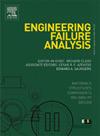Effect of finishing on surface integrity and contact fatigue damage of carburized 16Cr3NiWMoVNbE gears
IF 4.4
2区 工程技术
Q1 ENGINEERING, MECHANICAL
引用次数: 0
Abstract
Finishing technology has become an important process in the manufacture of high-performance gears due to its positive effect on surface roughness and residual stresses. However, the important effect of finishing technology on the micro-profile of gears is often overlooked. To systematically investigate the imporve mechanisms of finishing processes on case-hardened gears, this research examines the influences of vibration honing (VH) and stream barrel (SB) finishing processings on the surface integrity characteristics and contact fatigue damage evolution of carburized 16Cr3NiWMoVNbE gears. The results indicate that the surface roughness slight decrease after the SB and VH finishing. The compressive residual stress of three sets gears is more than −850 MPa. Furthermore, micro-profile of the tooth tip is modified by increasing the transition arc between the tooth flank and the chamfer face. The application of surface finishing effectively mitigates contact fatigue damage. This is primarily achieved through modification of the tooth tip micro-profile to mitigate contact interference between the tip and root regions.
精加工对渗碳16Cr3NiWMoVNbE齿轮表面完整性及接触疲劳损伤的影响
精加工技术对齿轮表面粗糙度和残余应力有积极的影响,已成为高性能齿轮制造中的重要工艺。然而,精加工技术对齿轮微廓形的重要影响往往被忽视。为系统探讨精磨工艺对淬火齿轮的改善机理,研究了振动珩磨(VH)和流桶精磨(SB)工艺对渗碳16Cr3NiWMoVNbE齿轮表面完整性特征和接触疲劳损伤演变的影响。结果表明,经SB和VH处理后,表面粗糙度略有下降。三组齿轮的残余压应力均大于−850 MPa。此外,通过增加齿面与倒角面之间的过渡弧来改变齿尖的微轮廓。表面处理的应用有效地减轻了接触疲劳损伤。这主要是通过修改齿尖微轮廓来减轻齿尖和牙根区域之间的接触干扰来实现的。
本文章由计算机程序翻译,如有差异,请以英文原文为准。
求助全文
约1分钟内获得全文
求助全文
来源期刊

Engineering Failure Analysis
工程技术-材料科学:表征与测试
CiteScore
7.70
自引率
20.00%
发文量
956
审稿时长
47 days
期刊介绍:
Engineering Failure Analysis publishes research papers describing the analysis of engineering failures and related studies.
Papers relating to the structure, properties and behaviour of engineering materials are encouraged, particularly those which also involve the detailed application of materials parameters to problems in engineering structures, components and design. In addition to the area of materials engineering, the interacting fields of mechanical, manufacturing, aeronautical, civil, chemical, corrosion and design engineering are considered relevant. Activity should be directed at analysing engineering failures and carrying out research to help reduce the incidences of failures and to extend the operating horizons of engineering materials.
Emphasis is placed on the mechanical properties of materials and their behaviour when influenced by structure, process and environment. Metallic, polymeric, ceramic and natural materials are all included and the application of these materials to real engineering situations should be emphasised. The use of a case-study based approach is also encouraged.
Engineering Failure Analysis provides essential reference material and critical feedback into the design process thereby contributing to the prevention of engineering failures in the future. All submissions will be subject to peer review from leading experts in the field.
 求助内容:
求助内容: 应助结果提醒方式:
应助结果提醒方式:


